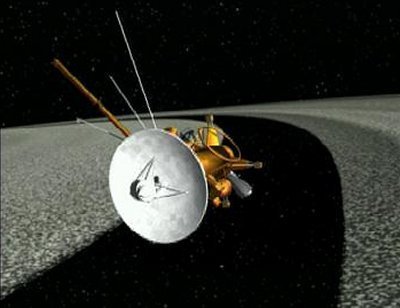
The Cassini Spacecraft (launched in 1997) has been orbiting the planet Saturn since 2004. Its full name is the Cassini-Huygens Spacecraft since it was named after the astronomers Giovanni Cassini and Christiaan Huygens. A collaboration between NASA (National Aeronautics and Space Administration), ESA (European Space Agency) and ISA (Italian Space Agency) the Cassini craft is designed to study the planet Saturn along with its moons and ring system.
It will now soon be entering the next stage of its mission. Starting on November 30th the Cassini spacecraft will change its trajectory. This new orbit will take the craft over Saturn’s pole and through it’s rings. It is planned that this will take the craft within 4850 miles of the “F ring” and 56,000 miles above the surface of Saturn as its closest. This approach will allow Cassini to directly sample the material which make up the rings.
Between 30th November and 22nd April, the craft will pass through this region of Saturn’s ring once every seven days, meaning a total of 20 times. This is due to happen for the first time on 4th December.
Linda Spilker, Cassini project scientist at NASA’s Jet Propulsion Laboratory (JPL), said: “We’re calling this phase of the mission Cassini’s Ring-Grazing Orbits, because we’ll be skimming past the outer edge of the rings. In addition, we have two instruments that can sample particles and gases as we cross the ring plane, so in a sense, Cassini is also ‘grazing’ on the rings.”
As well as allowing an unprecedented analysis on Saturn’s ring it will also explore more of Saturn’s moons such as Pandora and Atlas.
After this phase is completed it is expected that the Cassini craft will be set on a trajectory that will crash it into Saturn. This will completely destroy the craft and will prevent any biological contamination of the moons of Saturn, particularly Enceladus or Titan which are the two moons most likely to be able to sustain life.
